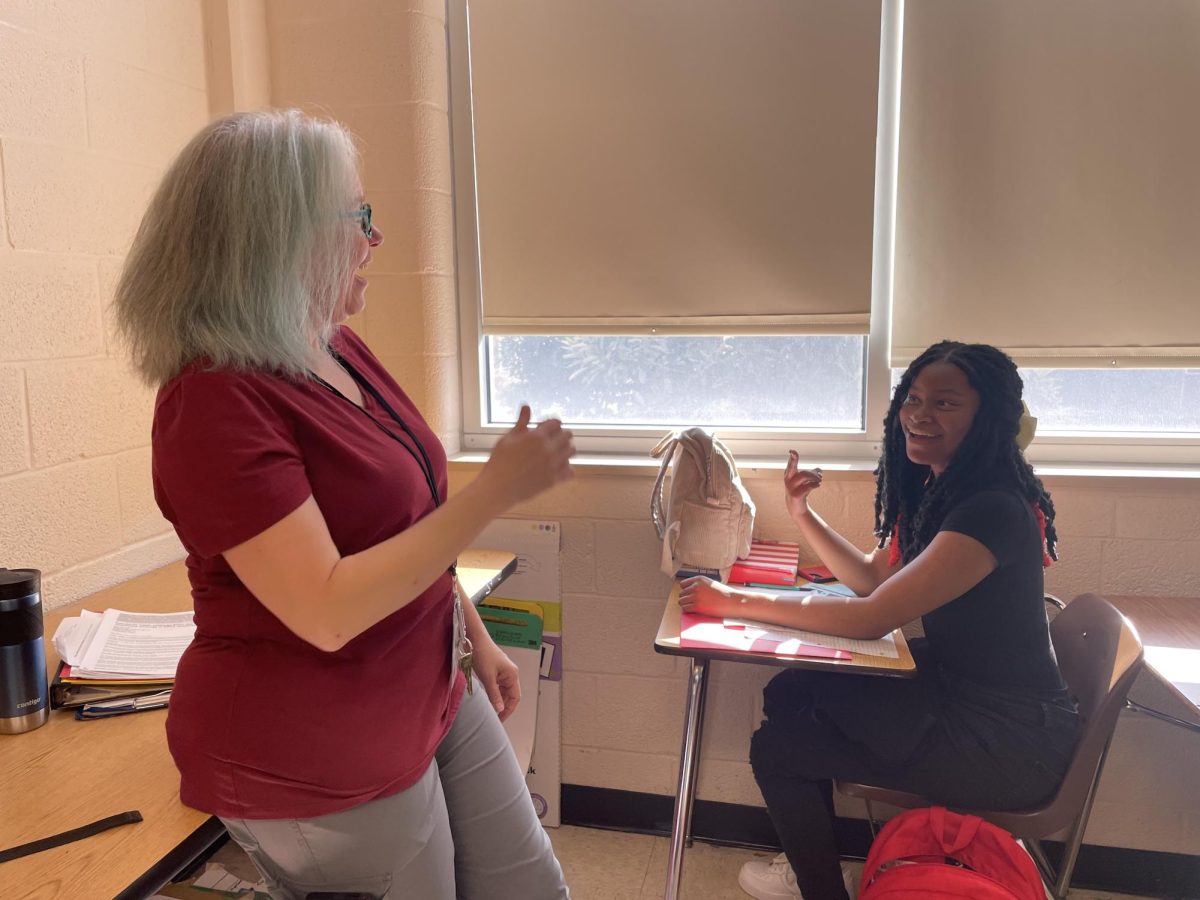Spanish. Chinese. French. Japanese. Latin. When one pictures White Station High School’s (WSHS) language department, their mind usually drifts to one of these languages. After all, every student needs at least two years of foreign language to graduate. However, there is one language used throughout WSHS’s campus that one may not immediately picture: American Sign Language (ASL).
WSHS’s Deaf and Hard of Hearing (HOH) department currently consists of five teachers and four interpreters. Deaf and HOH teachers instruct their students in a similar way as hearing students, but they often take extra care to ensure that their messages and ideas are communicated clearly. The deaf and HOH interpreters frequently interpret at various school events and often accompany certain students in their classes so that they can understand the class’s content.
“[My day-to-day is] busy,” Morangers Cash, one of WSHS’s interpreters, said. “Gym, chemistry, U.S. Government, Spanish II — I’m free for fifth period — Weight Training and seventh period is math. I just meet the student in the class, and sometimes I have a student who follows me around as she feels awkward — she’s deaf — as she doesn’t know how to communicate with hearing people.”
For interpreters, translating from English to ASL can be mentally taxing. It takes a large amount of focus to be able to immediately and effectively communicate in a different language to deaf/HOH students while the teacher or speaker continues talking. There is little downtime between translating sentences for translators.
“When the teacher is talking, they talk fully in English,” Cash said. “So, for me, I have to listen and translate into their language so they can understand [and] can be on the same page. You have to be mentally focused; there can be no type of distraction or anything like that.”
Beyond practical challenges, interpreting can also be difficult when taking the varying levels of ASL understanding among a group of deaf/HOH students into account. Furthermore, as with any class, some students can be less focused.
“Everything [can be a challenge],” Cash said. “[The challenges are] everything for us because sometimes a student has a bad day, they have an attitude, something bad is going on at the house; I can’t get upset; I can’t get emotional; I cannot get upset with them. I have a talk with them so they can understand and get back into the class.”
On the teaching side of the deaf/HOH department, similar experiences and challenges with communication can arise. Rhonda Stevens is the Assistant Teacher for the Deaf and Hard of Hearing in Functional Skills class with Kemm Browne. Stevens has been deaf since birth, and is an adjunct professor at the University of Memphis where she teaches ASL to college students.
“[Effective communication] is the number one key to everything I face,” Stevens said. “It is important to me that I get my [message] across to my peers and students. I don’t let my emotions get the best of me when it comes to frustrations on some days. I just make the best of it each day.”
Peers, teachers and interpreters can be some of the most important connections that deaf/HOH students make at WSHS because they can communicate with each other. There is often a large barrier of understanding and communication between deaf/HOH students and their hearing counterparts.
“I have good relationships with deaf and hearing students,” Stevens said. “I make sure I am able to give them the attention and listening ‘eyes’ they need to talk to. I am the type of person to show kindness to them as well as respect. Once that is [shown], you don’t know how much respect you [c]ould get in return.”
The deaf/HOH department and the associated Functional Skills classes ensure that their students are prepared after they graduate from high school. Even though such students may experience life and school in different ways, they can succeed academically just the same.
“As I work with Functional Skills students in one classroom, I would say that I have seen some of my students excel academically as well as with hands-on jobs when we do community work,” Stevens said. “Once I see students doing well in the classroom, I know students will do well after high school.”
Although the deaf/HOH department is not as well-known compared to the other language departments at WSHS, many of its faculty hope to gain greater recognition for both ASL and interpretation itself, as well as for their students and their life experiences.
“I would like for everyone in the whole school to recognize our faculty and staff as well as students,” Stevens said. “We want everyone to know that we want to feel [like] we belong as much as everyone else. If hearing students get recognition, I want our deaf students to be recognized as well. We all want to feel included.”




































